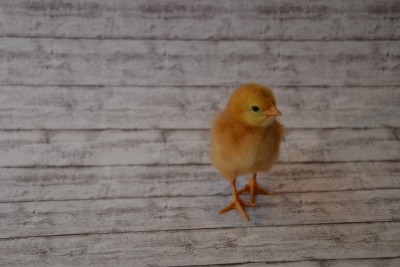Where Have all the Chicks Gone? by Amy Barkley
Amy Barkley, Livestock Specialist
Southwest New York Dairy, Livestock and Field Crops Program

Where Have all the Chicks Gone?
by Amy Barkley, Livestock and Beginning Farm Specialist, SWNYDLFC
It's spring. Birds are calling, the harsh chill is starting to lift. Giddy with anticipation for your spring flock, you go onto your favorite hatchery's ordering page and find out that they are sold out through summer. Concerned, you try your local farm supply store, but there's nothing peeping in their bins - they sold out of their chicks as soon as they got them in this morning. So this begs the question, why can't you get ahold of chicks right now?
It's no surprise that increased input costs of farming have resulted in pricier eggs at the supermarket. To complicate matters, the presence of Highly Pathogenic Avian Influenza has resulted in the death of 10% of the nation's laying hen flock. This setback in production coupled with the holiday demand at the end of 2022 caused the wholesale price of eggs to spike to $5.43/dozen in December. It's recently come down, but these prices are prompting more people than ever to add some chickens to their backyard and for small farms to increase the size of their laying flocks.
While egg laying flocks have been impacted by HPAI, breeder chickens supplying the eggs for meat producing (broiler) flocks have also been affected. The shortage of breeders means a shortage of meat-type chicks for everyone. For larger broiler breeder operations, that means chicks that would normally be made available to small farms and backyard producers may first fill commercial broiler houses instead, limiting their availability. That said, at this point the shortage is localized to different areas of the U.S.. If your hatchery doesn't have broilers in stock, there may be other hatcheries that have them!
Regardless of what type of chicken they hatch or what market they sell into, breeders of chicks must plan their flocks at least a year in advance. For those flocks that are laying eggs for the 2023 hatching season, those breeders had to have been selected and raised in the summer and fall of 2022. So, this year's numbers for hatchery breeder flocks are essentially set. Because companies have to project chick demand a year in advance, it can be challenging to estimate how many hens and roosters to stock in a breeding flock to match demand. Many times, they're spot on, but with bird flu cases and overall demand increasing, demand is outpacing supply. Once the reservations are full, they're full! Sometimes availability opens as orders are cancelled or ship dates are changed, but it's a gamble to wait if you have a plan to raise a certain number of hens or meat birds this year.
So, what can small flock owners do this year to get the birds they need? There are a couple of options.
1.) Explore hatcheries you haven't investigated before. We recommend looking for baby poultry from NPIP-certified flocks, which are tested free of certain poultry diseases and have acceptable, practiced biosecurity protocols. A listing of NPIP-certified hatcheries by state can be found using the clickable map at: https://www.poultryimprovement.org/statescontent.cfm
2.) If you know you will need chicks later in the year, get your reservations in now! Many hatcheries are already selling out through summer.
3.) Consider purchasing straight run chicks, especially for laying strains. Straight run means that 50% of the chicks will be male and 50% will be female. The straight run option tends to sell out slower than the all pullet (female) option, so there may be straight run chicks available sooner than all female chicks.
If your orders are not already placed for the season, it may be challenging to find chicks. But the good news is that hatcheries will pivot and increase production for next year to meet this new demand.
Upcoming Events
WNY Pastureland Conversion & Soil Health Field Day
July 16, 2025
Middleport, NY
Join American Farmland Trust for the Western New York Soil Health Field Day on July 16, 2025, at Zeliff Farm in Middleport, NY, from 9:00 AM-3:15 PM. Learn about pasture conversion, soil health benchmarking, biochar in grazing systems, and best grazing practices. Plus, enjoy hands-on demos with the NY Soil Health Trailer, drones, and cover crops! Check out the attached agenda for more information about the field day and REGISTER HERE. Zeliff Farms is a regenerative beef operation who has recently partnered with AFT on outreach and education to farmers including learning circles and evaluating biochar effects on soil health.
IPM Strategies to Protect Corn and Soybean Seed in NY
July 30, 2025
Hamburg , NY
SWNYDLFC and Cornell IPM are hosting a grower meeting to discuss integrated pest management strategies for protecting corn and soybean seed in New York.
FAMACHA Training for Sheep and Goat producers in Woodhull NY
August 13, 2025 : FAMACHA Training in Woodhull
Woodhull, NY
Join us for a discussion and hands-on training for internal parasite integrated pest management in sheep and goats. Certification is available to all students participating in the workshop.
Announcements
No announcements at this time.





